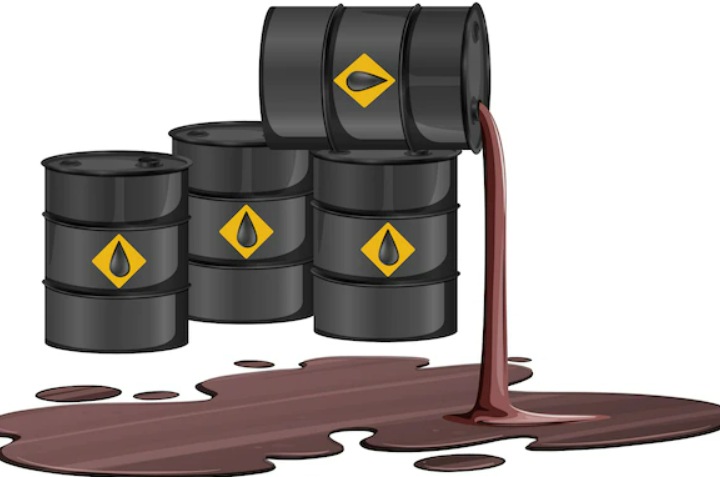
Aria Thomas
Mar 22, 2022 11:38

The quest for the best asset protection investment is becoming increasingly complex. Even cash, equities, and bonds are risky these days. Investors are diversifying their portfolios and migrating to physical assets in greater numbers. Investment diamonds, in addition to real estate and precious metals, are of interest when value preservation is more essential than return on investment. Diamonds have traditionally held their worth throughout time and are linked with long-term value. Diamonds are known as the "world's toughest money" for a reason (Frankfurter Allgemeine Zeitung). Customers who buy diamonds say they build diamond portfolios worth about 5% of their overall assets. Their investing vision is long-term, and they frequently consider wealth protection for future generations.
An Investment Diamond, as the name implies, is a loose diamond acquired only for the intention of functioning as an investment, or a piece of capital that would increase over time, allowing it to be sold for a value larger than it was purchased for.
Investment diamonds are loose diamonds with color gradings of D, E, and F and clarity ratings ranging from VVS to Flawless in the diamond world. That being said, like everything else, if you can buy a diamond at one price and sell that investment diamond at a higher price, it's a lucrative investment. While this is true, investing in diamonds may be difficult and risky. We recommend you, like with any investment, to completely educate yourself on what to look for when selling diamonds to a broker and how to invest before investing to guarantee you are making the best decisions for you and your wealth.
For most people interested in diamond investment, one of the most significant impediments is valuation. Most of us understand that diamonds are precious, but we don't understand what makes one diamond more valuable than another.
The first step in understanding diamond valuation is to get familiar with the four Cs: carat, color, clarity, and cut.
The weight is the most obvious aspect in determining the value of a diamond. Weights in diamonds are measured in carats, and below that, points are used. A carat is 200 milligrams, and a point equals.01 carat. A 25-point diamond, for example, weighs a quarter of a carat.
The color grading scale is numbered from D to Z. The grade with the least amount of color is D, while the grade with the most vibrant colors is Z. When it comes to diamond investments, less color is preferable.
Only when considering fancy color diamonds does greater color improve the value. Having said that, this is a relatively small fraction of the diamonds on the market, and they are not as suitable for investment.
The amount and appearance of imperfections in a diamond are indicated by the clarity scale. The diamond is deemed flawless if no inclusions can be spotted at 10x magnification. There are, however, eight different grades ranging from internally perfect to included.
The cut of a diamond relates to its design and how it interacts with light. The expertise with which a diamond was fashioned is significantly responsible for its cut quality. Cut can be rated from good to bad on a scale of one to ten.
Diamonds are a precious and durable raw resource. As a result, they do not suffer from the normal wear and tear that other antiques do.
Diamonds have been traded since the fourth century. This lifespan reflects their power, uniqueness, and beauty.
The increased mining, manufacturing, transportation, and insurance expenses associated with getting a diamond to market contribute to keep its value stable.
Diamonds, like other critical hard commodities such as gold and farmland, are thought to be immune to reductions in inflation and currency value.
There aren't many investments that can accompany you wherever you go. Diamonds are an exception to the norm due to their size.
Diamonds can be given to children or loved ones without the need for attorneys or notaries.

Diamonds have historically been a solid investment option. While any investment has some risk, diamonds have regularly grown in value by 3-5 percent each year over the previous decade, regardless of the global economy. This absence of volatility is what makes diamonds such an appealing financial investment. Nonetheless, we do not recommend investing in diamonds for a speedy return on your investment. Allowing time for your diamond investment to develop over a number of years is necessary if you want to maximize its earning potential.
All diamonds improve in value over time, but only exceptional quality diamonds truly stand out in terms of additional value.
The following are the quality standards that must be met if diamonds are to be considered a suitable long-term investment:
Diamond carat weight: 1 carat and above
Diamonds are cut in the following shapes: round brilliant cut, princess cut, and princess cut.
Diamond diamonds range from D to F.
The clarity of diamonds ranges from IF or LC (Loupe Clean) to VVS2.
Very Good or Excellent in terms of proportions, symmetry, and polishing.
None or slight/faint fluorescence
Diamond certifications include GIA, HRD, and IGI GIA sealed diamonds.
Diamonds provide a multitude of benefits in terms of investment, inheritance, and charitable giving. Diamonds may be bargained anywhere over the world.
Investment diamonds do not necessitate the use of a management service. They are usually kept in a safe deposit box.
Before you make a secure investment in a diamond, you should seek certain services from the merchant. These are detailed on the security page when purchasing a diamond.
When it comes to diamond investing, there are three key risks and disadvantages.
Other commodities, such as gold and silver, have a price index that can be tracked and verified on the stock exchange; diamonds do not! The Rapaport pricing list is used by most diamond dealers, however it is insufficient on its own. The list is provided as a guideline, and even if you can obtain a copy, it will be useless for various reasons. It solely considers the fundamentals of carat weight, clarity, and color. Finally, the market - supply and demand - determines the price. Certain diamonds are purchased by merchants both above and below the price list. A ten percent difference is significant. Furthermore, this list only applies to white colorless diamonds; there is no current list (or benchmark) for colored diamonds.

Doing a lot of research is the best method to overcome this disadvantage. Purchase from a respected seller who is known to be fair, and compare costs online.
Purchasing a diamond is a simple process. Selling one, on the other hand, is an entirely other story. There are certain corporations who buy diamonds, just as there are those that buy gold, but these firms will pay lesser prices. You might always attempt to sell it on Craig's list or something like. You may also attempt selling it to other stores, but they will most likely be strong negotiators, and you will have to outbid their supplier in terms of cost or rarity of your gem. The final alternative, which is designated for high-end diamonds, is to try to sell your diamond through auction houses. Christie's and Sotheby's diamond auctions are attracting a large number of diamond investors and collectors. The issue with them is that they generally take one-of-a-kind diamonds and their fees are regarded as costly by some.
Diamonds are not investments. There is little to no probability that the value of the diamond you purchased would increase by 30% the following year (not that it happens too often in stocks as well). Consider the diamonds you purchased for the long-term investing portion of your portfolio. Keep in mind that wonderful things come to those who wait!
Diamond investing, with everything that includes, should come under your category of alternative investments.
This means that they should only make up a modest fraction of your portfolio, and so on.
The concept is actually fairly straightforward. As previously said, investment in diamonds is founded on the fact that diamonds are physical commodities. As a result, they are widely available, even online. The ideas below are general principles, as well as how to invest in diamond tips and techniques if desired. But, most importantly, we discuss the hazards, so please read all the way through.
You should begin from the beginning. Learn the fundamentals of the diamond language. Begin with the four Cs of Diamonds. If you're serious about investing in colored diamonds, I strongly advise you to read our How to Choose a Colored Diamond tutorial directly after this one.
Remember that this should be part of your portfolio. True, unlike stocks, the initial amount required is slightly more, but there is no reason to exceed your budget or the ratio of your portfolio that you had in mind.
Do not put all of your eggs in one basket. We can't all be Warren Buffett, even though he remarked, "Diversification is protection against stupidity; it makes little sense for people who know what they're doing." Diversifying your "portfolio" in diamond investing, like in other assets, may be prudent. If you have a $20,000 diamond investment budget, you should consider buying two $10,000 diamonds or perhaps splitting it into three.

Furthermore, avoid purchasing two or three diamonds of the same sort. If you have your heart set on a pink diamond, it could be a good idea for the second diamond to be blue, green, or even yellow. You don't know which will rise the most or which will be simpler to sell later. This is also beneficial since it allows you to liquidate a piece of your portfolio if you need to reallocate some of your investing cash.
Please forgive me for making the apparent analogy to stocks, but a diamond is not a stock. The price of a diamond is not determined by hundreds of buyers and sellers bidding online on an open platform. However, because there are so many internet sellers, you can simply compare asking costs for comparable diamonds (this is harder to do when it comes to colored diamonds where each diamond is different).
Personally, I don't see the sense in purchasing something that everyone already has. I've heard of people investing in round 1 carat D VS diamonds, but when the time comes to liquidate your investment, you're selling something that can simply be purchased elsewhere - you're competing with many other vendors (and manufacturers).
However, if you have a unique natural colored diamond, such as a blue or pink diamond, you are in a class by yourself. However, keep the word "desired" in mind. A cushion cut or round diamond (even if pink) will, for example, be simpler to sell than a marquise. A VS blue diamond will be easier to sell than an I2 clarity diamond (even though it is reflected in pricing). Use your common sense and trust your intuition about what to avoid.
Take a peek at the most costly diamonds to get some ideas (and the trailing 10 for that matter).
Purchase only certified diamonds. Do not believe what the merchant says (or writing in case it is online). Keep in mind that even modest changes in a diamond's characteristics may cost a lot of money. We strongly advise purchasing diamonds with GIA certification. This is perhaps the most well-known gemological laboratory, as well as the most stringent.
Aside from the purchasing aspect of the investment, keep in mind that when it comes time to sell your diamonds, your buyer will most likely want to see a GIA grading report. The IGI is likewise highly severe when it comes to colorless diamonds, but when it comes to colored diamonds, the GIA is still the only one to trust.
Purchase only certified diamonds. Do not believe what the merchant says (or writing in case it is online). Keep in mind that even modest changes in a diamond's characteristics may cost a lot of money. We strongly advise purchasing diamonds with GIA certification. This is perhaps the most well-known gemological laboratory, as well as the most stringent.
Aside from the purchasing aspect of the investment, keep in mind that when it comes time to sell your diamonds, your buyer will most likely want to see a GIA grading report. The IGI is likewise highly severe when it comes to colorless diamonds, but when it comes to colored diamonds, the GIA is still the only one to trust.
This paragraph follows on from the previous one. Buying from a shop implies you obtained your diamond after several brokers and middlemen took their cut. We do not intend to buy cheap diamonds when we say "buy cheap" (on the contrary). This entails purchasing as far up the supply chain as possible. Skip the middlemen. Purchase straight from the manufacturer. Many diamond producers (including ourselves) now have internet storefronts and are happy to sell directly to end users. Just remember to follow our purchasing diamonds online safety advice.
Ask a lot of inquiries. Attempt to contact diamond specialists and consultants. Make use of diamond forums. It is the age of carrying and sharing. There are many individuals on social media who would be delighted to help. Some have most likely previously invested in diamonds and may offer their personal experiences.
Of course, diamonds aren't the only precious item worth considering. Gold is a suitable substitute for it. And this begs the question: which investment choice is preferable?
The obvious advantage of using gold is that it has universal worth. Because it has a fixed price per unit of weight, it functions similarly to stocks. This alternative is also advantageous because of its high liquidity and long-term reputation as the standard for national wealth.
The selection of a diamond, on the other hand, allows you to change your investment portfolio due to its four main criteria (or the 4C's). It is more dependent on all of its internal attributes and the availability of GIA certification than on demand. However, in order to take advantage of this characteristic, you will need expert assistance as well as access to pricing guides published online.
Is it a good idea to invest in diamonds? Any investment includes some element of speculation. All you can do is try to make a wise decision based on all of the facts available to you.
To summarize what has been discussed thus far, diamonds as an investment offer both advantages and disadvantages. I am convinced that their advantages and potential much outweigh their disadvantages. Simply be aware of the disadvantages and utilize it intelligently to reduce the dangers associated.

Mar 21, 2022 17:39

Mar 22, 2022 16:32